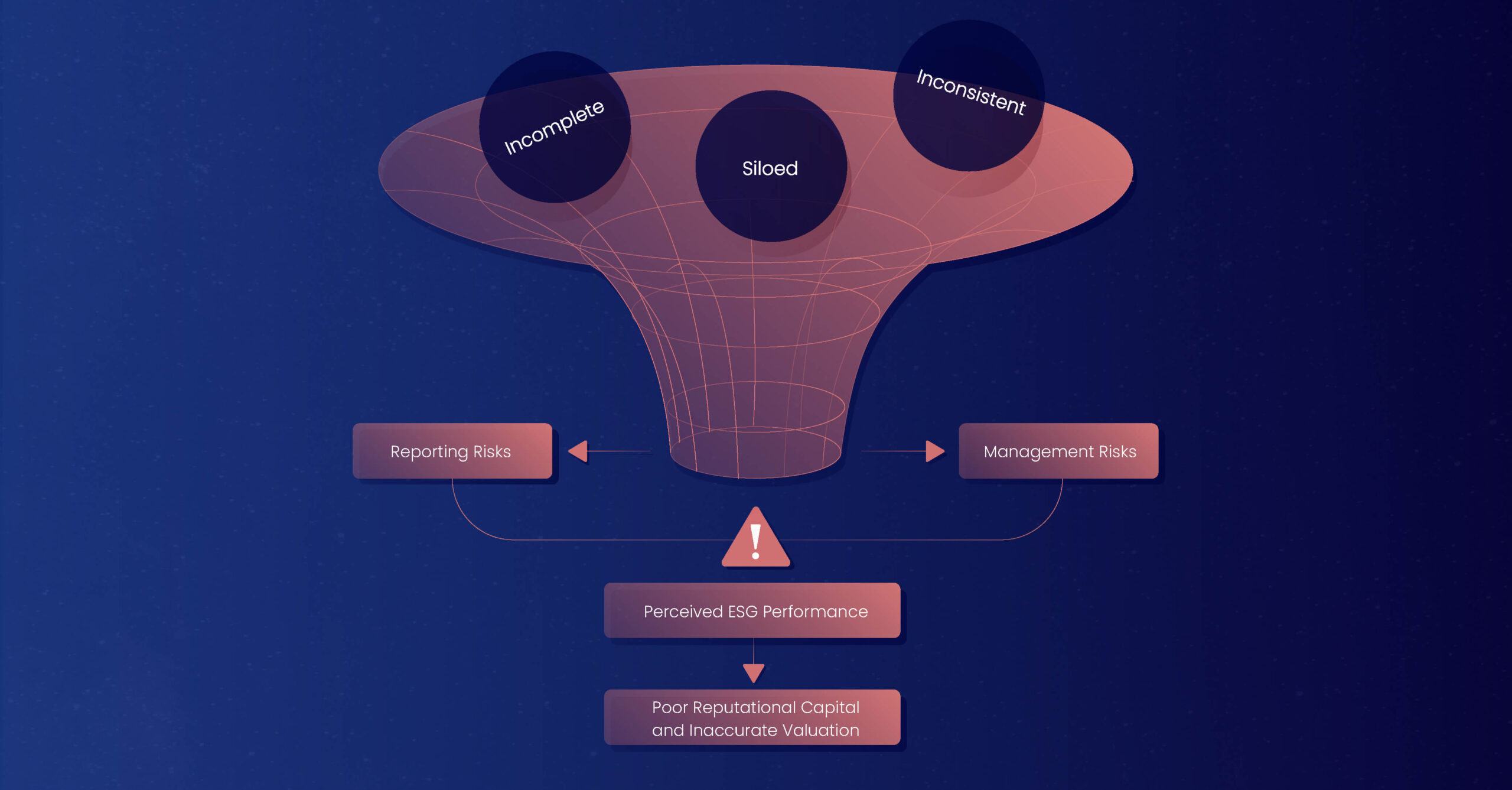
In today's corporate sustainability reporting landscape, quality ESG data is imperative for effective ESG program integration. However, the management of ESG data is a complex endeavor, characterized by diverse datasets, varied data management solutions, and a lack of standardization. As the demand for reliable ESG information grows, the risks associated with “garbage in”—inaccurate, incomplete, or unreliable data—are becoming increasingly apparent.
Let’s take a peek at what those risks are, and what you can do to avoid them.
A complex data landscape
ESG data encompasses a wide range of information, from workforce demographics to supplier compliance documents. And, all too often, this data is scattered across multiple departments and systems within an organization.
This diversity in data sources can make ESG data management a challenging task. Without a comprehensive approach to ESG data governance, the consistency and quality of ESG data can be compromised, rendering it ineffective for accurate assessment of an organization’s sustainability performance. As the popular computer science saying goes: garbage in, garbage out (“GIGO”).
The state of ESG reporting today can be likened to financial reporting a century ago. Just as financial reporting has evolved to become a highly standardized and regulated practice, ESG reporting is gradually heading in the same direction. Consequently, the risks associated with poor data management in ESG are becoming similar to those in financial data mismanagement.

Low-quality ESG data—what can go wrong?
The purpose of corporate data is to allow both management and stakeholders to make decisions and take actions that maximize benefits to the company and its stakeholders. Data is the foundational building block for managing and reporting on business-critical issues. When quality is compromised, particular challenges tend to arise (see Figure 1 below).
Reporting risks
Investors are increasingly seeking reliable ESG information that is both consistent and accurate, with the expectation that such data can be verified through external assurance or auditing. However, poor data management practices can hinder companies from having their non-financial information externally audited. In turn, this could discourage the inclusion of such information in regulatory filings.
For publicly listed companies, low-quality reporting that provides incomplete or inaccurate information can lead to capital market inefficiencies. Subsequently, this can lead to inaccurate market valuations.
Management risks
High-quality ESG data is not just crucial for external reporting but also for internal management and decision-making. Without reliable information and insights, management teams and boards cannot adequately evaluate or address critical ESG issues systematically.
Moreover, if investors perceive poor (or non-existent) management and oversight of material ESG issues, significant consequences can arise. For instance, shareholders are increasingly engaged in these matters through active dialogue, proxy voting, resolution filings, and other means.
Consequently, boards of directors are also finding themselves more involved in explaining their approach to managing and integrating ESG risks and opportunities. It’s important to recall that effective adoption of ESG practicesbegins with firm leadership commitment and active board oversight.
Figure 1. The Risks of Garbage In

Low quality data compromises business value
The importance of ESG practices in business is well-documented. Companies that prioritize high-quality ESG data—and sound data management—are more likely to secure access to investments and lower-interest loans. Moreover, the dawn of “conscious consumerism” means that customers will reward sustainability-minded companies with their continued loyalty.
A tarnished reputation, whether due to real or perceived ESG shortcomings, can potentially deter customers, partners, and investors. Therefore, businesses must prioritize transparent and accurate ESG reporting to safeguard their reputational capital and avoid inaccurate valuations.
But again, this all starts with quality data, the foundational building block to managing and reporting on business-critical issues.
What can my business do?
While you need good data management practices in place, this is insufficient on its own. Why? Because it all begins with data governance, and, more specifically, ensuring that your company has a solid data governance framework in place
Although data management and data governance may sound similar, they serve distinct roles. Data management focuses on execution, while data governance is all about strategy. Think of it as the board of directors guiding the executive team, where the framework sets the stage for high-quality data through policies, oversight, and consensus across the organization.
Ultimately, data governance is about shaping human behavior and fostering a culture of reporting, accountability, and responsibility for information assets.
It’s time for garbage out
In the end, it's not about data for its own sake, but what quality ESG data empowers you to achieve: better reporting and superior business management. Companies that prioritize data quality will be better positioned to mitigate risks, safeguard their reputation, and attract responsible investors.
As the sustainability reporting landscape continues to shift towards greater regulation, standardization, and external assurance, avoiding the risks of “garbage in, garbage out” has become all the more imperative.
Ready to explore the key elements of effective data governance? Download our “Quality In, Quality Out: The Benefits of Better ESG Data Governance” white paper today.